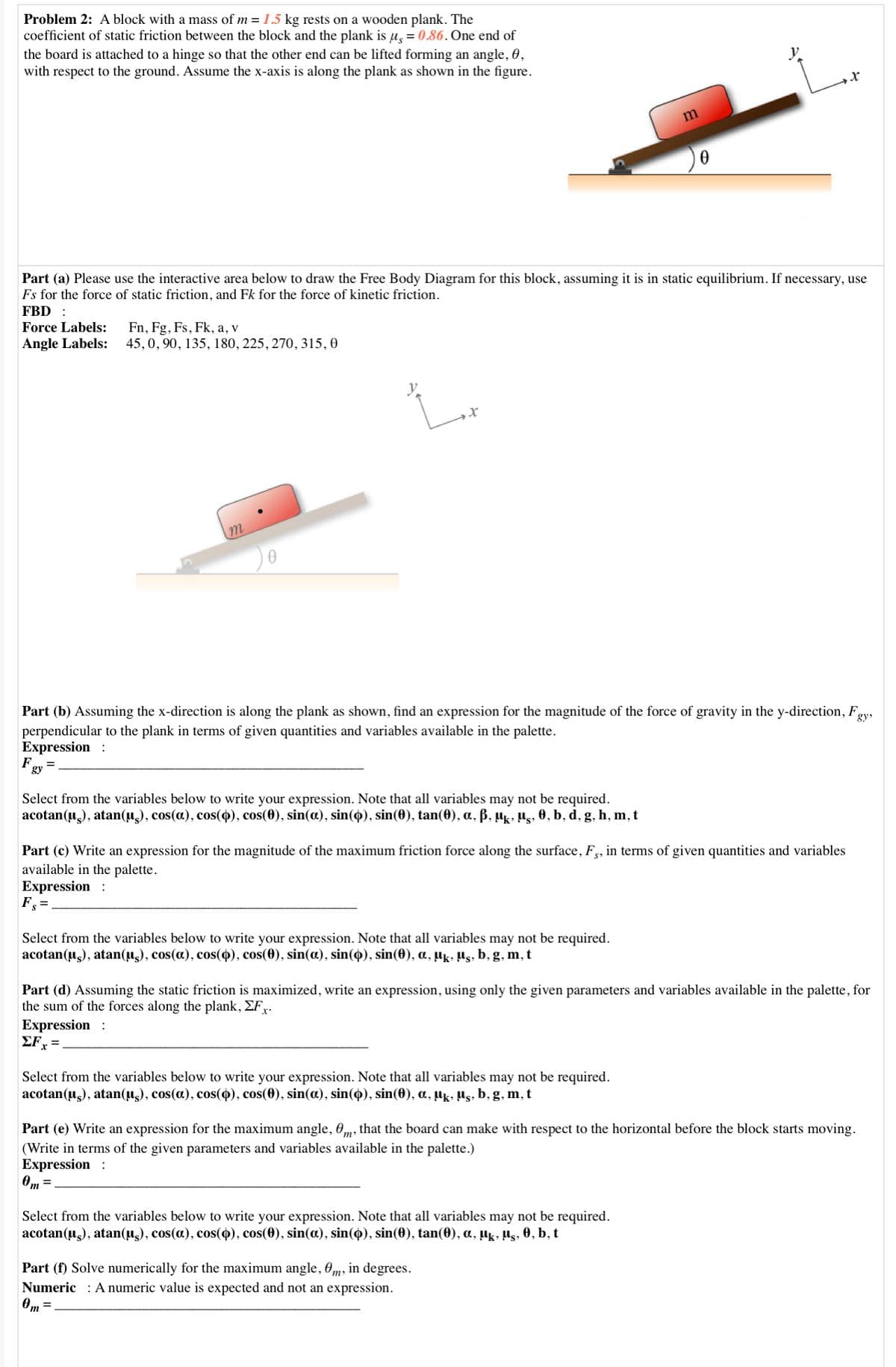Problem 2: A block with a mass of m 1.5 kg rests on a wooden plank. The coefficient of static friction between the block and the plank is µ, = 0.86. One end of the board is attached to a hinge so that the other end can be lifted forming an angle, 0, with respect to the ground. Assume the x-axis is along the plank as shown in the figure. Part (a) Please use the interactive area below to draw the Free Body Diagram for this block, assuming it is static equilibrium. If necessary, use
Rotational Equilibrium And Rotational Dynamics
In physics, the state of balance between the forces and the dynamics of motion is called the equilibrium state. The balance between various forces acting on a system in a rotational motion is called rotational equilibrium or rotational dynamics.
Equilibrium of Forces
The tension created on one body during push or pull is known as force.
Newton's Laws and Uniform Circular Motion Q2. Please answer and explain step by step and reasoning.

Since you have posted a question with multiple sub-parts, we will solve first three sub-parts for you. To get remaining sub-part solved please repost the complete question and mention the sub-parts to be solved.
Solution:-
1) The co-efficient of static friction between any object and surface of inclined plane(i.e. plank) , is given by
tanθ = μs
Here, μs = coefficient of static friction
θ = angle of the inclination
2) The force of gravity on an object of mass m , is given by
Fg = mge
Here, m = mass of object
ge = gravitational acceleration of earth
This, acts always vertically downward.
3) The maximum value of force of friction, is given by
fmax = fs = μsR
Here, μs = co-efficient of static friction
R = contact force on block by the surface of incline
Trending now
This is a popular solution!
Step by step
Solved in 4 steps with 3 images






